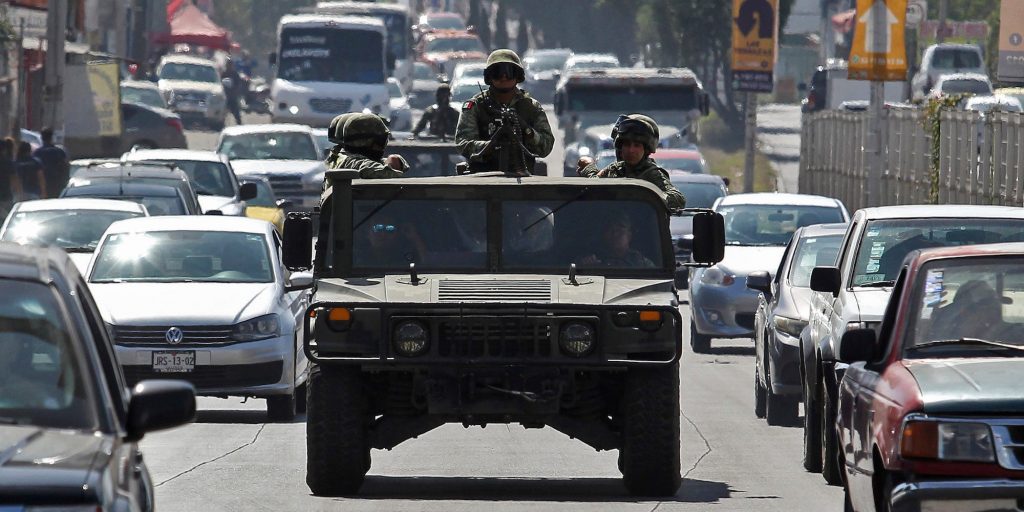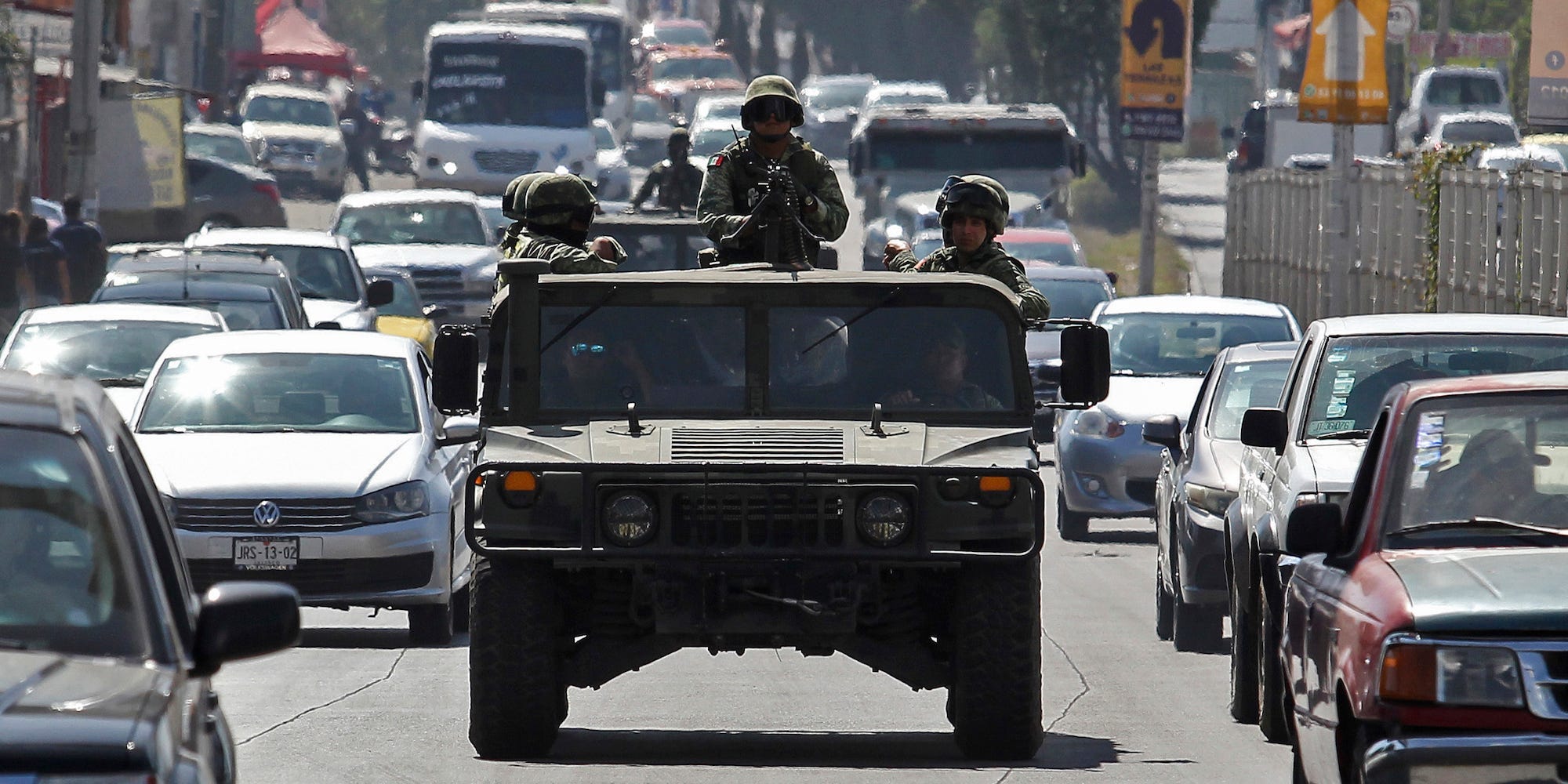
ULISES RUIZ/AFP via Getty Images
- Cartel Jalisco Nueva Generación is widely seen as Mexico's asendent cartel, rivaled only by the Sinaloa Cartel.
- But the group's ambitions are not limited to controling the drug trade in Mexico.
- According to sources and documents, the CJNG is stretching its empire into Central and South America with alliances and threats.
Mexico City, MEXICO – Mexico's ruthless Cartel Jalisco Nueva Generación (CJNG) is stretching its criminal empire south into Central and South America by making alliances, threatening authorities, and appropriating drug routes, according to documents and sources who spoke to Insider.
Originally based in the central Mexican state of Jalisco, CJNG has spread operations to almost every state in Mexico and most recently to countries like Guatemala, El Salvador, Honduras, Nicaragua, Colombia, and Chile.
Cartel Jalisco Nueva Generación has been described by US officials as the "best armed" criminal organization in Mexico and "one of the most dangerous transnational criminal organizations in the world."
US authorities have said the organization is attempting to operate in the US through local gangs, but CJNG is looking to own the drug routes and the supply chain throughout Latin America.
A recent report from Chile's Attorney General's Office describes how CJNG is trying to establish operations inside the country for "large-scale production of high-concentration marihuana."
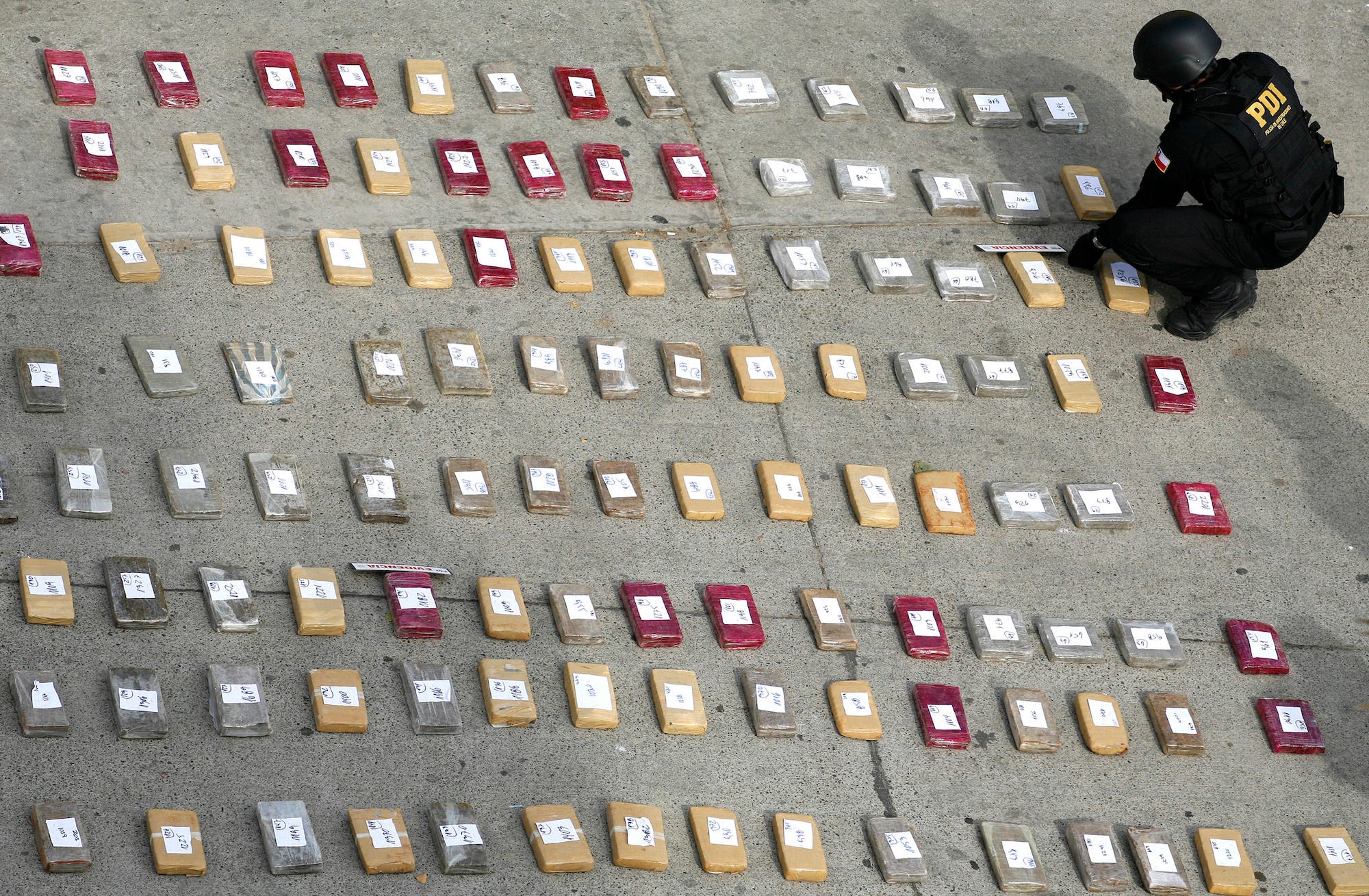
REUTERS/Eliseo Fernandez
Chilean Attorney General Jorge Abbott addressed the issue at a recent press conference, saying Chile had gone from being a transit country for drugs heading north "to be a country where very well known Mexican cartels are looking to settle."
The cartel's expanding operations are also troubling Guatemala, where its members recently threatened Guatemala's National Police for "stealing" a load of drugs belonging to the leader of CJNG, Nemesio Oseguera Cervantes, known as "El Mencho," for whom US authorities are offering $5 million.
In a video posted online in early September, supposed members of the CJNG threatened several Guatemalan police officers.
"No one messes with Señor Nemesio's people. Those things have an owner, and the owner is Cartel Jalisco Nueva Generación," an unidentified man said in the video.
Guatemalan police later confirmed the identity of the officers mentioned in the video and detailed the seizure of a drug load that could have been what the video was referring to.
An operative with the Cartel Jalisco Nueva Generación detailed the areas of operation in Guatemala for Insider.
The man, who asked not to be identified to avoid retaliation, said CJNG is currently fighting in Central and South America against the Sinaloa Cartel, specifically "Los Chapitos" and "Los Mayos" factions, linked to "El Chapo" Guzmán's sons and to the alleged active leader of the Sinaloa Cartel, Ismael "El Mayo" Zambada.
"We are mostly concentrated in Sinaloa's plazas, like all the Pacific coast of Guatemala, San Marcos, Quetzaltenango, Santa Rosa, Jutiapa, but also Petén, Melchor De Mencos, Alta Verapaz, and Huehuetenango," the operative said.
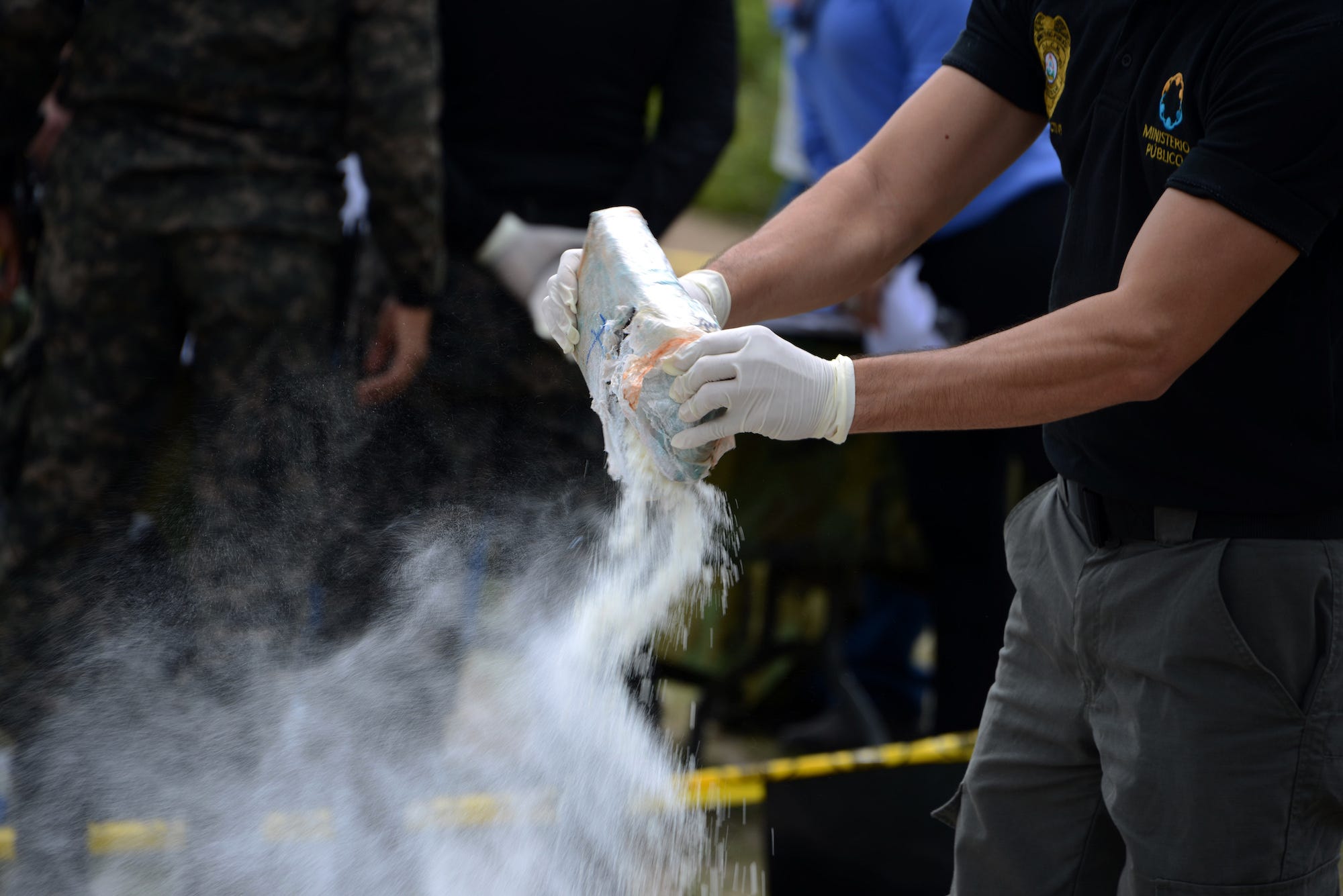
ORLANDO SIERRA/AFP via Getty Images
An active member of the Nicaraguan military also confirmed to Insider the presence of Cartel Jalisco Nueva Generación in Honduras and Nicaragua.
The military member, speaking anonymously because they did not have authorization to talk to the media, said they have found bases of operation and "training camps" mostly in the region near the Nicaraguan and Honduran border.
"The Fonseca Gulf is widely used by the CJNG to operate, but also Puerto Lempira in Honduras [and] Corinto, Puerto Sandino and the Caribbean side of Nicaragua," the military member said.
The Cartel Jalisco Nueva Generación is allied with several gangs involved in shipping cocaine to Europe, according to the operative.
"The Sinaloa Cartel used to have a strong hold of the ports in Nicaragua, but lately we have found many operations and arrested some of them [CJNG], which leads us to think they now have more control over drug trafficking than the Sinaloas," the Nicaraguan military member said.
The Sinaloa Cartel and now Cartel Jalisco Nueva Generación are posing new threats to all of the region, according to Sergio Guzmán, director of Colombia Risk Analysis, a Colombia-based security and risk-analysis firm.
"These Mexican organizations used to be partners with other criminal organizations in South and Central America, but during the past few years they have been playing a more active role, to the point where they are now making decisions in many other countries," Guzman said.
Mexican criminal organizations have had a growing presence in Colombia since the late 1990s, when major Colombian groups like the Medellín and Cali cartels fell from power.
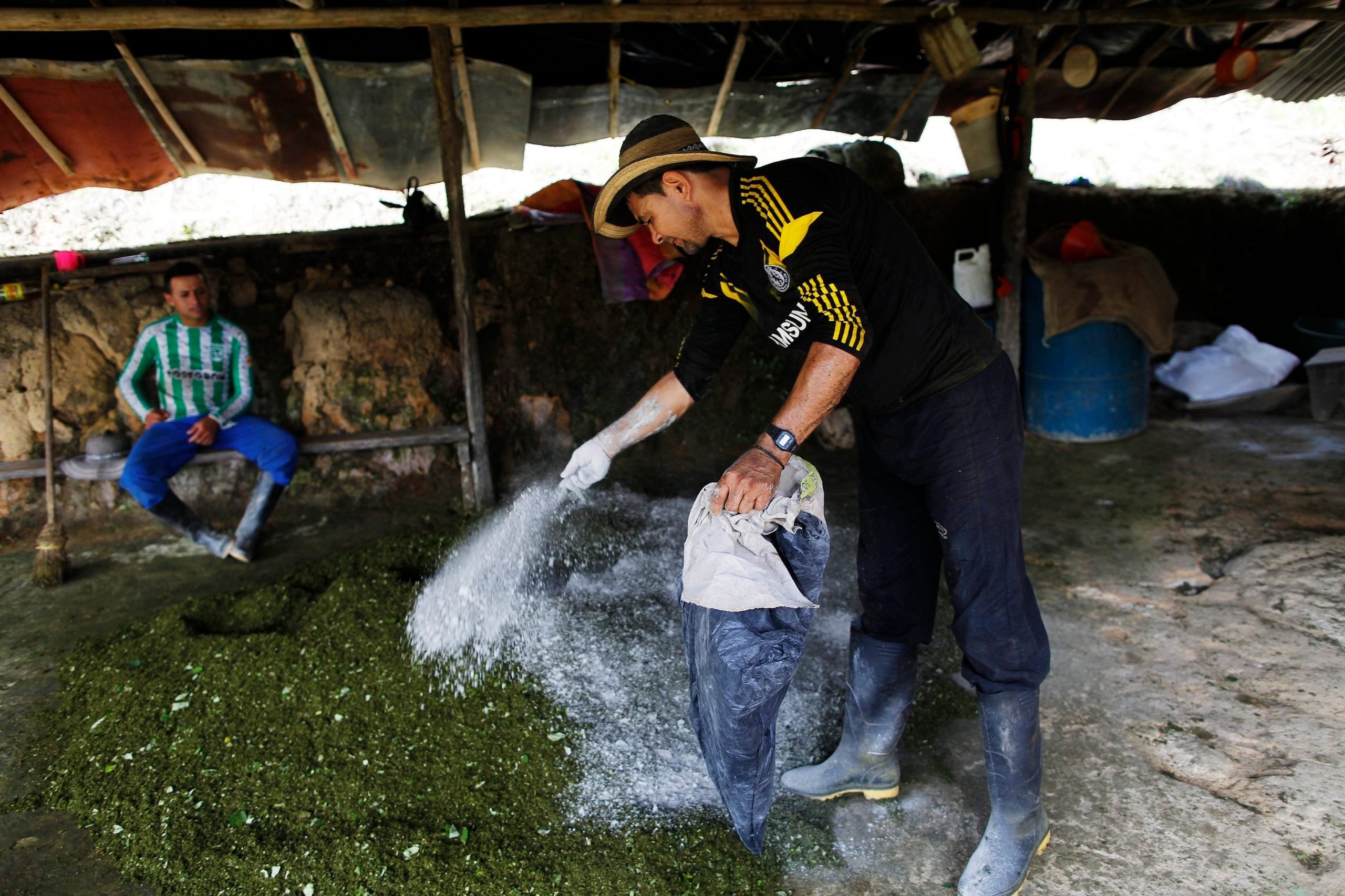
AP Photo/Rodrigo Abd
In the DEA's first formal investigation of the CJNG, done in 2007, the agency accused "El Mencho" of shipping cocaine from Colombia through Guatemala to the US. In August this year, Colombian authorities arrested Néstor Tarazona Enciso, an alleged member of the Cartel Jalisco Nueva Generación accused of money laundering, indicating that the cartel has an active physical presence in Colombia.
Guzmán also detailed how the alliance between Mexican criminal organizations and the Clan del Golfo in Colombia, which is now in charge of the cocaine trade from Colombia to the US, could soon change.
"These two organizations, Cartel de Sinaloa and Cartel Jalisco [Nueva Generación] are trying to get closer to the chain of supply, specifically cocaine," he said.
In 2019, Colombia's anti-narcotics chief said Mexican criminal groups were shipping an unrefined form of the drug called coca base out of Colombia in and processing it in Mexico, reflecting those efforts to control more of the cocaine supply chain.
Cartel Jalisco Nueva Generación's exponential growth is a direct threat to all of Latin America and should be addressed "by all countries involved," Guzmán said.
"I see a dangerous gap in the collaboration between countries where these criminal enterprises operate. There is no coordination, and that is what these groups are exploiting to their own benefit," he said.
